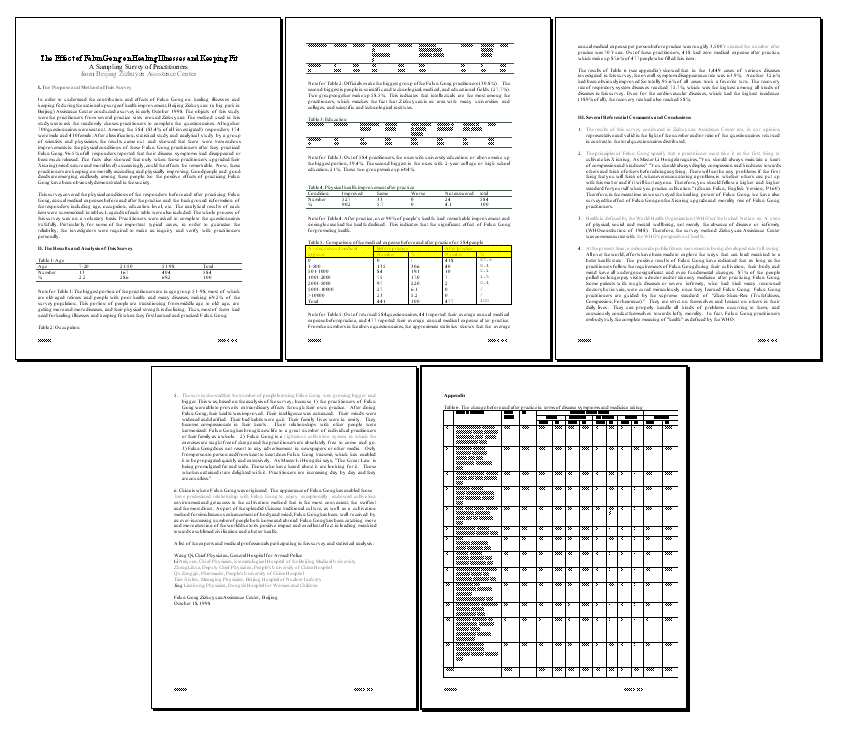The Effect of Falun Gong on Healing Illnesses and Keeping Fit

Health is defined by the World Health Organization (WHO) of the United Nation as: A state of physical, social and mental wellbeing, not merely the absence of disease or infirmity (WHO constitution of 1948). Therefore, the survey method Zizhuyuan Assistance Center was commensurate with the WHO's perspective of health.
The Purpose and Method of This Survey
In order to understand the contribution and effects of Falun Gong on healing illnesses and keeping fit during the national upsurge of health improvement, Beijing Zizhuyuan (a big park in Beijing) Assistance Center conducted a survey in early October 1998. The subjects of this study were the practitioners from several practice sites around Zizhuyuan. Altogether 700 questionnaires were sent out. Among the 584 (83.4% of all investigated) responders, 174 were male and 410 female. After classification, statistical study and analytical study by a group of scientists and physicians, the results came out and showed that there were tremendous improvements in the physical conditions of these Falun Gong practitioners after they practiced Falun Gong. 96.5% of all responders reported that their disease symptoms had disappeared or been much released . The facts also showed that only when those practitioners upgraded their Xinxing (mind nature and moral level) unceasingly, could the ef! fects be remarkable.
Subject Occupations:
Officials make the biggest group of the Falun Gong practitioners (30.8%). The second biggest is people in scientific and technological, medical, and educational fields (27.7%). Two groups together make up 58.5%. This indicates that intellectuals are the most among the practitioners, which matches the fact that Zizhuyuan is an area with many universities and colleges, and scientific and technological institutes.
Participating organizations and researchers:
Wang Qi, Chief Physician, General Hospital for Armed Police;
Li Naiyuan, Chief Physician, Stomatological Hospital of the Beijing Medical University;
Zheng Lihua, Deputy Chief Physician, People's University of China Hospital;
Qu Zengqiu, Pharmacist, People's University of China Hospital;
Tian Xiulan, Managing Physician, Beijing Hospital of Nuclear Industry;
Jing Lianhong, Physician, Dongshi Hospital for Women and Children.
Results:
Condition |
Improved |
Same |
Worse |
Not answered |
Total |
Number |
527 |
33 |
0 |
24 |
584 |
% |
90.2 |
5.7 |
0 |
4.1 |
100 |
Table 5: Comparison of medical expenses before and after practice for 584 people
Average annual medical expense |
Before practice |
After practice |
||
Number |
% |
Number |
% |
|
0 |
0 |
/ |
418 |
87.6 |
1-500 |
135 |
30.6 |
40 |
8.4 |
501-1000 |
84 |
19.1 |
10 |
2.1 |
1001-2000 |
75 |
17.0 |
7 |
1.5 |
2001-5000 |
97 |
22.0 |
2 |
0.4 |
5001-10000 |
27 |
6.1 |
0 |
/ |
> 10000 |
23 |
5.2 |
0 |
/ |
Total |
441 |
100 |
477 |
100 |
